The Rise of the Cicadas
I know this sounds like a sci-fi movie where insects emerge to take over the world. Unfortunately, I’m referring to the actual emergence of millions and millions of cicadas that are sure to overwhelm much of the Midwest and eastern United States this summer. Rather than reinventing the wheel, so to speak, I thought I’d share the excellent coverage JC Chong did last month in his PestTalks newsletter. Here’s JCs article:
Brood X is coming!
What could be more interesting than trillions of buzzing cicadas? No, no, katydids and cicadas (or "locusts" by some) ain’t related! Cicadas are more closely related to a treehopper or a planthopper.
Not just any typical good ol' dog-day cicada either! We’re talking about the periodical cicadas, AKA the red-eyed devils. (Okay, only I call them that.)
More specifically, Brood X periodical cicadas, which will be emerging after growing quietly underground for 17 years. In some areas, as many as 1.4 million individuals could emerge from a single acre. Compare to Brood X, other broods (such as Brood IX of 2020) are almost like jokes. As if to make up for lost time, these periodical cicadas will have a very loud and riotous party in the spring.
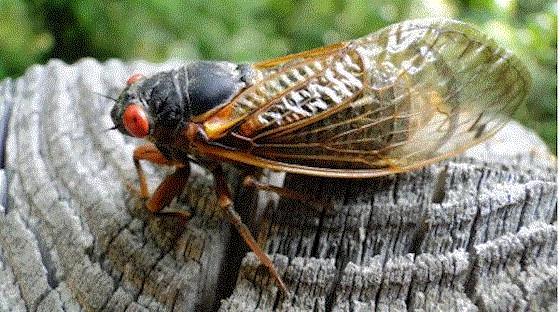
An adult periodical cicada or Magicicada septendecim AKA 17-year Pharaoh Cicada. (Photo credit: Clyde Sorenson, North Carolina State University.)
Get ready for the onslaught my friends in Delaware, northern Georgia, eastern Illinois, Indiana, northern Kentucky, Maryland, southern Michigan, New Jersey, southern New York, western North Carolina, western Ohio, southern and eastern Pennsylvania, eastern Tennessee, northern Virginia, and eastern West Virginia! There’ll be a lot of finger pointing among neighbors about who brought God’s wrath on this earth. I can see why some would call periodical cicada emergence a locust plague.
What about South Carolina, you ask? Well, thank you for noticing that. Yes, we South Carolinians are spared this year, but we look forward to our very own Great Southern Broad (AKA Brood XIX) in 2024! The kicker is Brood XIX is a 13-year brood, meaning that I’ll hear them after a shorter intermission than y’all with the 17-year broods.
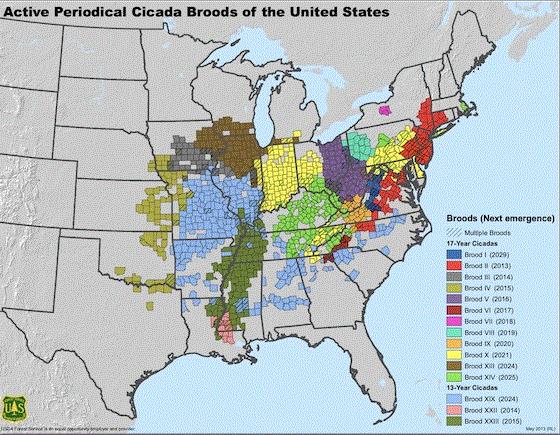
The distribution of periodical cicada broods in the United States. (Figure credit: USDA Forest Service.)
Okay, there are a lot of them, and they’re loud, but what’s the big deal? They're not as harmless as loud teenagers. More than just annoying, periodical cicadas can actually damage trees. They deposit eggs in stems of woody plants. A female cicada has a large and serrated ovipositor, which she uses to slice open bark on thin stems to deposit her eggs. Each stem can have multiple oviposition wounds. If there are a lot of ovipositing cicadas, which there will be, the stems may be damaged so severely that they’ll wither, flag and break off. Nursery stock and newly transplanted trees are at a greater risk of damage.
Mike Raupp of the University of Maryland published a wonderful article in TCI Magazine. Mike describes the biology, damage and management of the periodical cicadas from a tree-care standpoint. If you live in an area to be overrun by Brood X and plan to put in a woody plant or two this spring, don't. Wait until the cicadas are gone.
After examining research data, Mike concluded that enveloping the susceptible trees (the article has a list of these tree genera) with nets of 1-cm size mesh is perhaps the most effective preventive management approach, especially for newly transplanted trees. It makes no sense trying to spray your way out of the onslaught because, sure, you can kill a thousand of them, but there are a million waiting to take the places of the fallen. Check out Mike’s article for more insights on periodical cicadas.
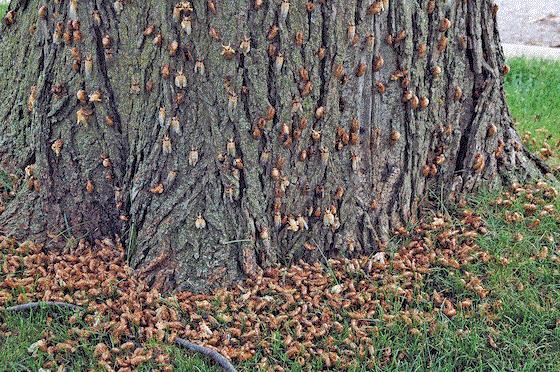
This will be a common scene in 2021, when hundreds of thousands of cicadas will emerge beneath trees in more than a dozen eastern states. Photo credit: Michael J. Raupp, PH. D.
As you can see, some parts of the country are going to experience a few or thousands of cicadas in the weeks ahead. Netting is definitely the most effective option to reduce injury and egg scars. However, this can be done on a few trees or small areas in nurseries; it’s likely not a viable option for most growers. Cicadas can be difficult to control with contact insecticides, and with so many of them out there, I suspect controlling them will be more difficult than in normal years. If you feel up to the battle, consider using pyrethroid-based insecticides, such as bifenthrin and cyfluthrin, and rotating spray applications weekly (if not more frequently) with products containing carbaryl.

Darwin Perennials University
Darwin Perennials isn’t going to let a worldwide pandemic get in its way of hosting one of the industry’s best events. Although they’ll be putting the popular Darwin Perennials Day on hiatus due to COVID-19 restrictions, the folks at Darwin decided once again to host a series of online events. This year, Darwin Perennials is hosting a FREE online video educational series called Darwin Perennials University.

Darwin Perennials University is setting up to be the one of the summer's best perennial training opportunities. Attendees will gain valuable information on Darwin Perennials' and Kieft Seed's newest perennials and how to grow them. The video series will cover many aspects of production including propagation, transplanting, finishing and selling.
The free online video education series is slated to begin on June 16, 2021. Each week, expert product teams at Darwin Perennials and Kieft Seed will host a new 20-minute video. The videos will be available in both English and Spanish. Highlighted crops during the series include echinacea, lavender, phlox, salvia and more.
GO HERE to register.

It’s Not All Rosy
Last week, I visited with several growers in Tennessee. While visiting with one of them and admiring the beautiful landscape, I found myself admiring the roses. In my usual fashion, I looked beyond the roses to see colonies of aphids feasting on the new growth and developing flower buds.
|
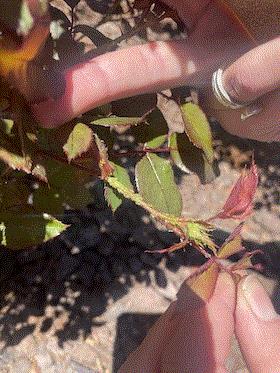
Aphids are commonly observed feeding in large groups or colonies near the top of plants.
|
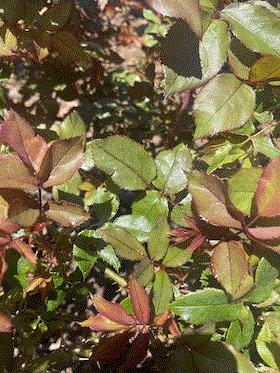
Another sign aphids are present is the presence of shiny or wet looking leaves from honeydew (digestive bioproduct containing sugars and other stuff) the aphids excrete from their bodies.
|
I was with an extension specialist who confirmed the shiny leaves were covered with honeydew. She licked one of the leaves and confirmed it was sweet. I took a hard pass on tasting the honeydew; I just don’t want digestive biproducts in my mouth.
I’ve discussed aphid control in past newsletters and have shared several of my favorite tools for managing aphids inside greenhouses and nurseries. Some of them aren't labeled for application in landscape settings like the one where I observed these aphids. To control aphids in the landscape, consider using insecticides containing afidopyropen, flonicamid, flupyradifurone, pymetrozine, and the combination or insecticidal soap and cyfluthrin.

More Ailing Roses
Ah, but there’s more. I was so keyed into the less-obvious tiny aphids, that I nearly overlooked the more obvious symptoms on the plants.
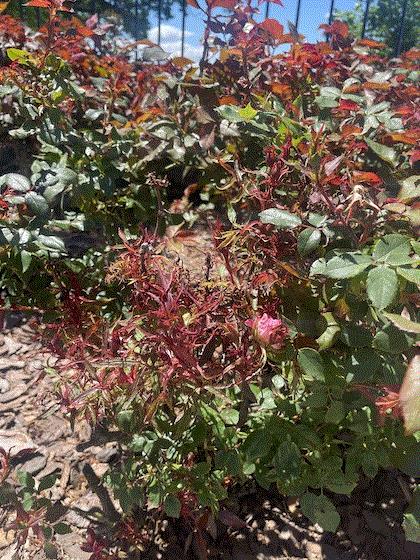
After admiring the aphid colonies and the extension specialist honeydew taste tasting, I looked at one of the roses in the landscape and saw what no one wants to ever see in their roses—Rose Rosette.
Rose Rosette Disease (RRD) is caused by a virus that's vectored by tiny eriophyid mites. RRD has several key symptoms: witche's broom, distorted buds and flowers, excessive soft thorns and abnormally red, elongated stem growth are the most commonly observed symptoms caused by RRD.
Like other viruses, there's no cure for rose RRD, however, if the symptoms are caught early enough, pruning the affected canes down to the ground and destroying them has stopped the spread and allowed unaffected portions of the plant to recover.
Saunders Brothers has developed a great, informative resource on RRD. This technical bulletin provides descriptions and images of the symptoms and options for controlling wild multiflora roses (the most prevalent host for RRD) and eriophyid mites.
Click HERE to view Saunders Brothers' RRD information sheet.

PPA's First Ever Hybrid Symposium
The Perennial Plant Association (PPA) has a long history of hosting National Symposiums and understandably wasn’t able to host the usually well-attended event in 2020 due to COVID-19. The pandemic isn’t completely behind us so the PPA is adapting to this new world and hosting a Hybrid National Symposium in 2021.
The virtual portion of the event will be held July 27-29, 2021 and will consist of numerous sessions covering a range of topics, including landscape design, marketing, natives, new perennials, virtual tours and many more.

Cavano's Perennials
The second part of the symposium will consist of a series of small, regional and outdoor in-person events called "PPA Pop-Ups." Each pop-up event will have a unique program, but will include education, tours and lots of perennials. Check out the current schedule of pop-ups.
|
August 5, 2021 |
Cavano’s Perennials |
Kingsville, MD |
|
August 18, 2021 |
Terra Nova Nurseries |
Canby, OR |
|
August 19, 2021 |
Midwest Groundcovers |
St. Charles, IL |
|
August 26, 2021 |
Walters Gardens |
Zeeland, MI |
|
September 9, 2021 |
Marriott at Penn Square |
Lancaster, PA |
|
September 16, 2021 |
Hoffman Nursery |
Rougemont, NC |
The PPA Pop-Ups are designed to provide the opportunity for PPA members to connect and network while allowing the flexibility to adapt to regional guidelines and recommendations for safe gatherings.
Click HERE to learn more about the PPA's 2021 Hybrid National Symposium.

Helenium Mariachi Ranchera
I thought I’d end the newsletter with a great new helenium introduction from Plants Nouveau. Allow me to introduce Mariachi Ranchera:
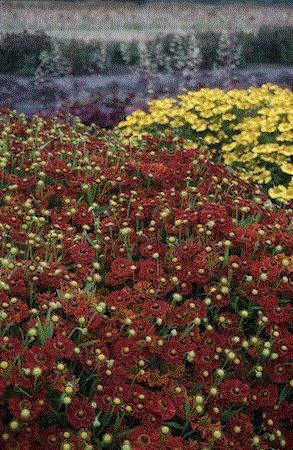
Ranchera is a great addition to the Mariachi series of helenium. This new cultivar bred by AB-Cultivars produces loads of deep red, rounded blooms atop its compact 20-in. foliage from June through September. The true red blooms are held on strong, sturdy stems that don't flop. Ranchera is hardy to Zone 3 and has great resistance against powdery mildew. Be sure to give Helenium Mariachi Ranchera a try.
Thanks for reading this edition of Perennial Pulse. My email is ppilon@ballpublishing.com if you have any comments or suggestions.
Take care,
Paul Pilon
Editor-at-Large—Perennial Pulse
Technical Manager—OHP, Inc.
This email was received by you and 34,121 other fine subscribers!
If you're interested in advertising in Perennial Pulse, contact Kim Brown ASAP and she'll hook you up.